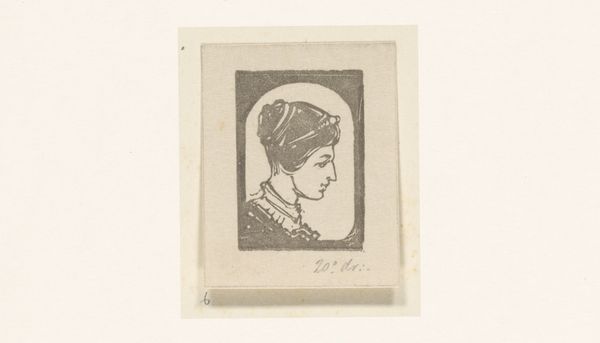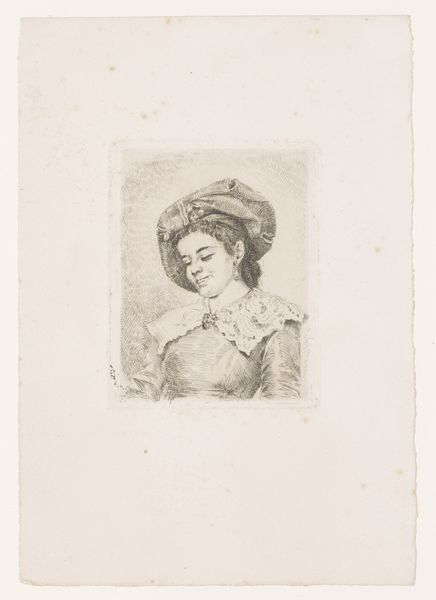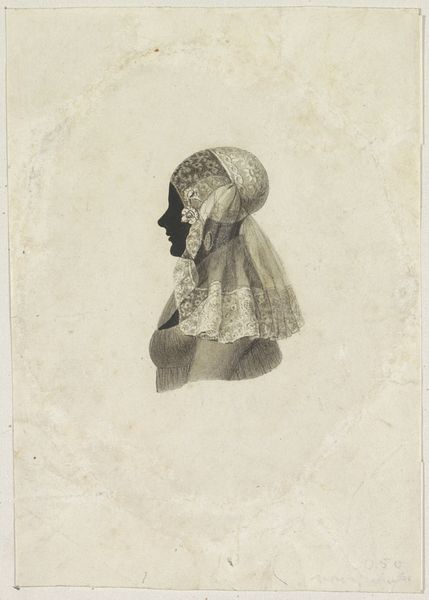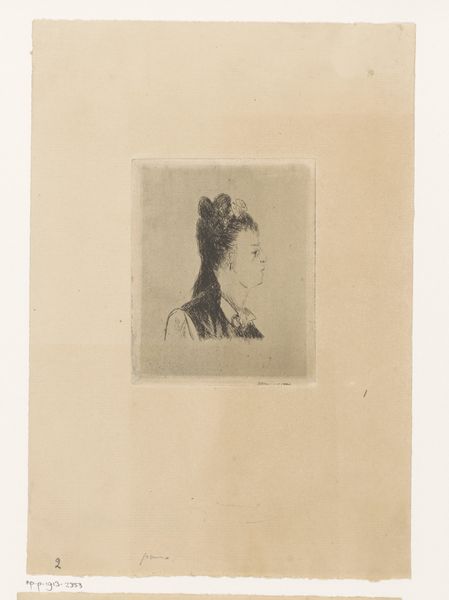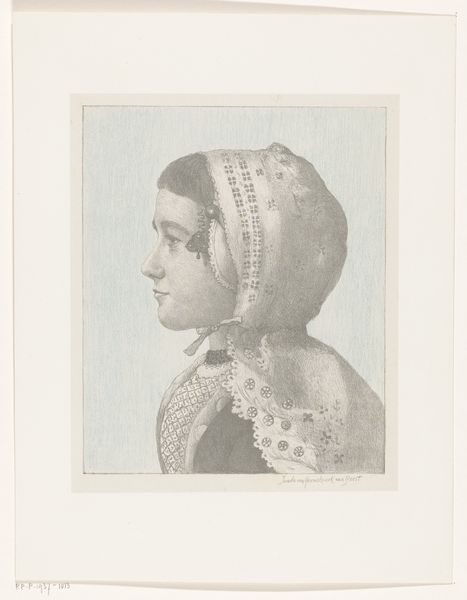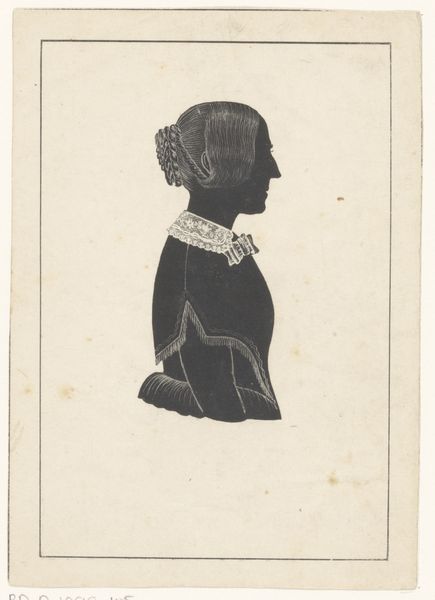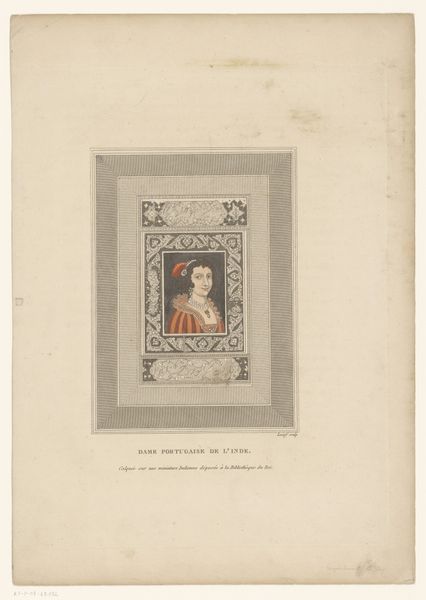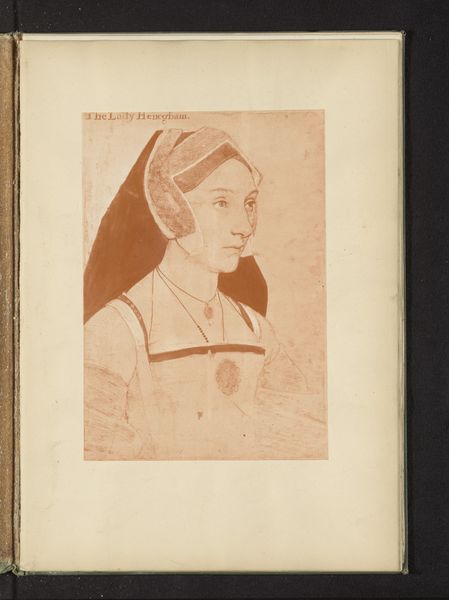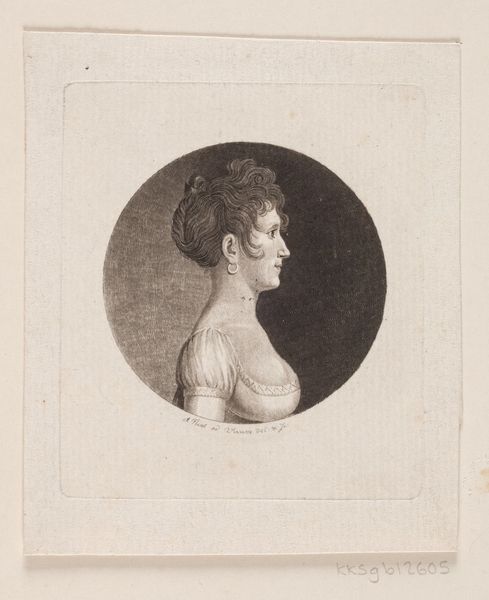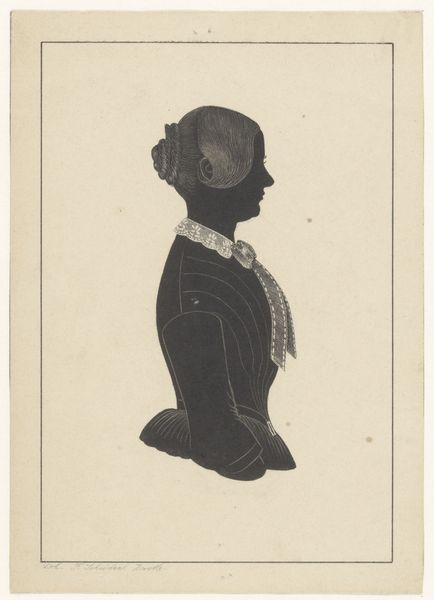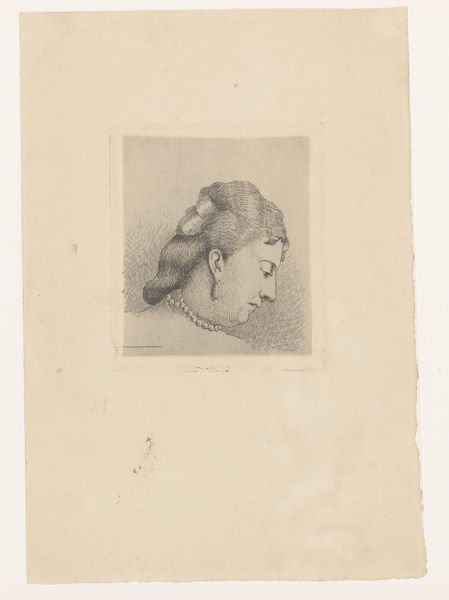
drawing, print, paper
#
portrait
#
drawing
# print
#
paper
#
monochrome
Dimensions: height 65 mm, width 48 mm
Copyright: Rijks Museum: Open Domain
Curator: This drawing, simply titled "Head of a Woman", is by Bernard Willem Wierink, and although its precise date of creation is unknown, it is attributed to the period between 1866 and 1939. We believe it's a print on paper, and part of the Rijksmuseum's collection. Editor: Initially, I'm struck by the overall reserve and subdued palette. It's as if the artist intentionally muted any vibrant emotions, focusing instead on capturing a contemplative mood. The compressed format contributes to a feeling of intimacy, inviting close, almost conspiratorial, engagement. Curator: Indeed, the subdued nature enhances our analytical gaze. Note how the artist uses the monochromatic palette to delineate form. The economy of line in the facial features—the brow, the nose—speaks volumes. And consider how the dark background subtly frames and isolates the head, foregrounding the subject’s profile. Editor: And that headdress! It reminds me of a figure in a medieval painting, almost a saint or a character from some half-remembered legend. Is the framing of the image meant to resemble a mirror perhaps, reflecting back both who she is, but who the viewer sees her as? Or perhaps even what Wierink sees her as, because the lines have a distinct male gaze about them, I feel. Curator: Certainly the framing invites a degree of speculation, and that reading could align with current feminist theoretical frameworks. One cannot ignore that the material is, technically speaking, both drawing and print, a fascinating blending of unique artistic gesture and replicable medium. The semiotic interplay is… compelling. Editor: Well, for me, forgetting theory for a moment, she just seems trapped, almost like she knows she's posing but also longing for a space and time of her own. It makes me want to draw a whole story around her, a rebellious fairytale where she removes that stuffy headdress, runs into the nearest forest and finds true freedom. Curator: An understandable, if imaginative, response. Thinking again about technique, the restricted palette—almost like a classical monochrome, doesn't it invite questions about seriality, or reproduction? Editor: For me it's really more about the emotion caught between the visible line work and imagining what lies beneath, personally speaking. Thanks. Curator: Thank you for providing a more grounded perspective!
Comments
No comments
Be the first to comment and join the conversation on the ultimate creative platform.
